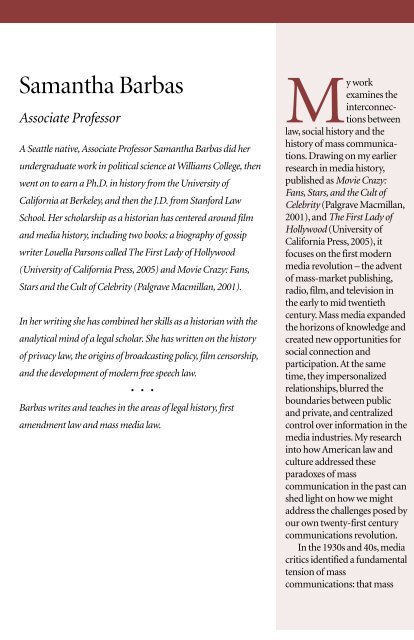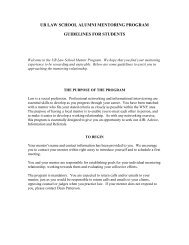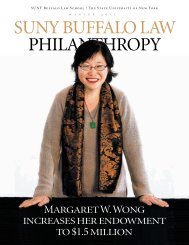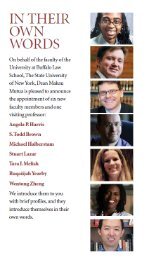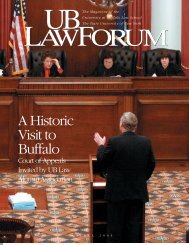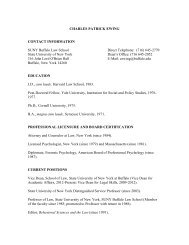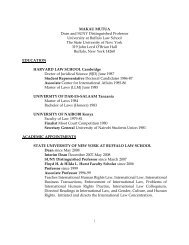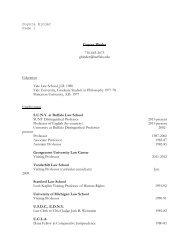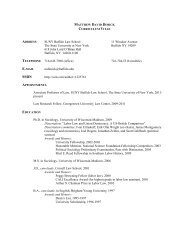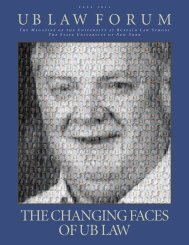Introducing Kim Diana Connolly, Samantha Barbas, Matthew Dimick ...
Introducing Kim Diana Connolly, Samantha Barbas, Matthew Dimick ...
Introducing Kim Diana Connolly, Samantha Barbas, Matthew Dimick ...
You also want an ePaper? Increase the reach of your titles
YUMPU automatically turns print PDFs into web optimized ePapers that Google loves.
<strong>Samantha</strong> <strong>Barbas</strong><br />
Associate Professor<br />
A Seattle native, Associate Professor <strong>Samantha</strong> <strong>Barbas</strong> did her<br />
undergraduate work in political science at Williams College, then<br />
went on to earn a Ph.D. in history from the University of<br />
California at Berkeley, and then the J.D. from Stanford Law<br />
School. Her scholarship as a historian has centered around film<br />
and media history, including two books: a biography of gossip<br />
writer Louella Parsons called The First Lady of Hollywood<br />
(University of California Press, 2005) and Movie Crazy: Fans,<br />
Stars and the Cult of Celebrity (Palgrave Macmillan, 2001).<br />
In her writing she has combined her skills as a historian with the<br />
analytical mind of a legal scholar. She has written on the history<br />
of privacy law, the origins of broadcasting policy, film censorship,<br />
and the development of modern free speech law.<br />
• • •<br />
<strong>Barbas</strong> writes and teaches in the areas of legal history, first<br />
amendment law and mass media law.<br />
My work<br />
examines the<br />
interconnections<br />
between<br />
law, social history and the<br />
history of mass communications.<br />
Drawing on my earlier<br />
research in media history,<br />
published as Movie Crazy:<br />
Fans, Stars, and the Cult of<br />
Celebrity (Palgrave Macmillan,<br />
2001), and The First Lady of<br />
Hollywood (University of<br />
California Press, 2005), it<br />
focuses on the first modern<br />
media revolution – the advent<br />
of mass-market publishing,<br />
radio, film, and television in<br />
the early to mid twentieth<br />
century. Mass media expanded<br />
the horizons of knowledge and<br />
created new opportunities for<br />
social connection and<br />
participation.At the same<br />
time, they impersonalized<br />
relationships, blurred the<br />
boundaries between public<br />
and private, and centralized<br />
control over information in the<br />
media industries. My research<br />
into how American law and<br />
culture addressed these<br />
paradoxes of mass<br />
communication in the past can<br />
shed light on how we might<br />
address the challenges posed by<br />
our own twenty-first century<br />
communications revolution.<br />
In the 1930s and 40s, media<br />
critics identified a fundamental<br />
tension of mass<br />
communications: that mass<br />
media allow the whole world<br />
to see and hear but permit<br />
relatively few to speak. In<br />
“Creating the Public Forum,”<br />
in the Akron Law Review,I<br />
described one historical<br />
response to this problem: a<br />
social movement in the World<br />
War II era that cast the First<br />
Amendment as a state<br />
obligation to provide average<br />
citizens a means to address a<br />
public audience. Present-day<br />
broadcasting policy, and the<br />
public forum doctrine, are<br />
legacies of this “public forum”<br />
movement.<br />
Does the medium matter?<br />
Should ideas be regarded<br />
differently under the First<br />
Amendment if they appear in<br />
print, over the airwaves, or on<br />
a computer screen? A<br />
forthcoming work,“How the<br />
Movies Became Speech,”<br />
explores how this question<br />
was addressed in debates over<br />
the constitutionality of<br />
motion picture censorship in<br />
the early twentieth century.<br />
Developing the concept of<br />
social convergence of<br />
communications, it argues<br />
that movies, initially regarded<br />
as outside the First<br />
Amendment, became<br />
constitutionally protected<br />
“speech”when they converged<br />
with print media, and offers<br />
convergence as a paradigm for<br />
understanding the evolution<br />
of free speech law.<br />
I have long been fascinated<br />
with the history of gossip and<br />
celebrity culture, and in an<br />
article in the Yale Journal of<br />
Law and the Humanities, I<br />
explored historical efforts to<br />
address a dilemma that has<br />
taken on new importance in<br />
the Facebook age: how to<br />
balance the legal protection of<br />
privacy with the vast public<br />
interest in private lives. In<br />
ongoing research that will<br />
hopefully culminate in a book<br />
project, I examine the<br />
foundations of modern<br />
privacy law and suggest how<br />
history may help us<br />
conceptualize and protect<br />
privacy in our culture of total<br />
exposure.


